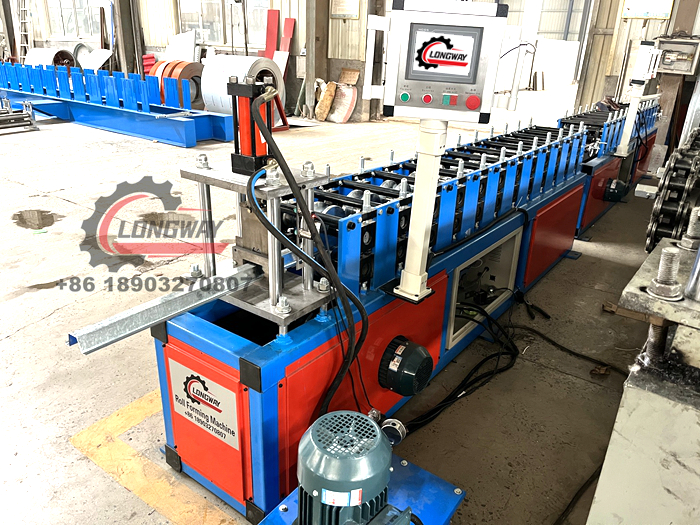ceiling t bar making roll forming machine
The Ceiling T Bar Making Roll Forming Machine An Overview
In the world of construction and interior design, the ceiling plays a vital role in shaping the ambiance and overall aesthetic of a space. One of the most popular materials used in modern ceilings is the T bar, which supports the ceiling tiles and enhances the structural integrity of false ceilings. To produce these T bars efficiently and in large quantities, manufacturers rely on advanced machinery, particularly the ceiling T bar making roll forming machine. This article provides an overview of this innovative equipment, its functioning, and its applications in various industries.
What is a Ceiling T Bar Making Roll Forming Machine?
A ceiling T bar making roll forming machine is specialized equipment designed to produce T-shaped metal bars used in suspended ceiling systems. These machines employ a roll forming process, which involves feeding metal strips through a series of rollers that progressively shape the material into desired profiles. The end product is a high-quality T bar that can be seamlessly integrated into ceiling systems to support tiles or panels.
Working Mechanism
The roll forming process begins with the raw material, typically galvanized steel or aluminum, fed into the machine. The metal strip is then uncoiled and passed through a series of rollers. Each roller is precisely designed to incrementally bend the strip into the desired T bar shape. The machine is equipped with various stations, which ensure accurate shaping and cutting of the metal.
Once the T bar reaches the final shape, it is cut to the specified length using a cutting mechanism, usually activated by the machine's control system. This automated process ensures high precision and uniformity in the produced T bars, which is crucial for seamless installation in ceiling systems.
Key Features
1. Automation Modern roll forming machines are highly automated, reducing the need for manual labor and ensuring consistent quality. They come with programmable control systems that allow operators to set parameters for different T bar sizes and shapes.
ceiling t bar making roll forming machine

2. Speed and Efficiency These machines operate at high speeds, capable of producing hundreds of meters of T bar per hour. This efficiency translates into shorter lead times for projects, benefitting both manufacturers and clients.
3. Versatility Ceiling T bar making roll forming machines can often be adjusted to produce various profiles, catering to different design requirements. This flexibility makes them valuable assets in metal fabrication facilities.
4. Durability Machines are built from high-quality materials to withstand prolonged use. Many are designed with features that minimize wear and tear, ensuring a longer lifespan and consistent performance.
Applications
The T bars produced by these roll forming machines are widely used in residential, commercial, and industrial buildings. Their primary application is in suspended ceiling systems, where they provide structural support for ceiling tiles. T bars help create a clean and modern look while also allowing easy access to electrical and plumbing systems hidden above the ceiling.
In addition to ceilings, T bars can also be used in other applications, such as partitioning and wall systems. Their adaptability and strength make them essential components in various construction projects.
Conclusion
The ceiling T bar making roll forming machine represents a significant advancement in manufacturing technologies. By combining automation, speed, and precision, these machines have revolutionized the production of ceiling T bars, making them accessible and economical for builders and contractors. As the demand for efficient and aesthetically pleasing interior designs continues to rise, the role of such machines in the construction industry will undoubtedly become more prominent, paving the way for innovative designs and applications in ceiling construction.
-
Roof Panel Machines: Buying Guide, Types, and PricingNewsJul.04, 2025
-
Purlin Machines: Types, Features, and Pricing GuideNewsJul.04, 2025
-
Metal Embossing Machines: Types, Applications, and Buying GuideNewsJul.04, 2025
-
Gutter Machines: Features, Types, and Cost BreakdownNewsJul.04, 2025
-
Cut to Length Line: Overview, Equipment, and Buying GuideNewsJul.04, 2025
-
Auto Stacker: Features, Applications, and Cost BreakdownNewsJul.04, 2025
-
Top Drywall Profile Machine Models for SaleNewsJun.05, 2025








